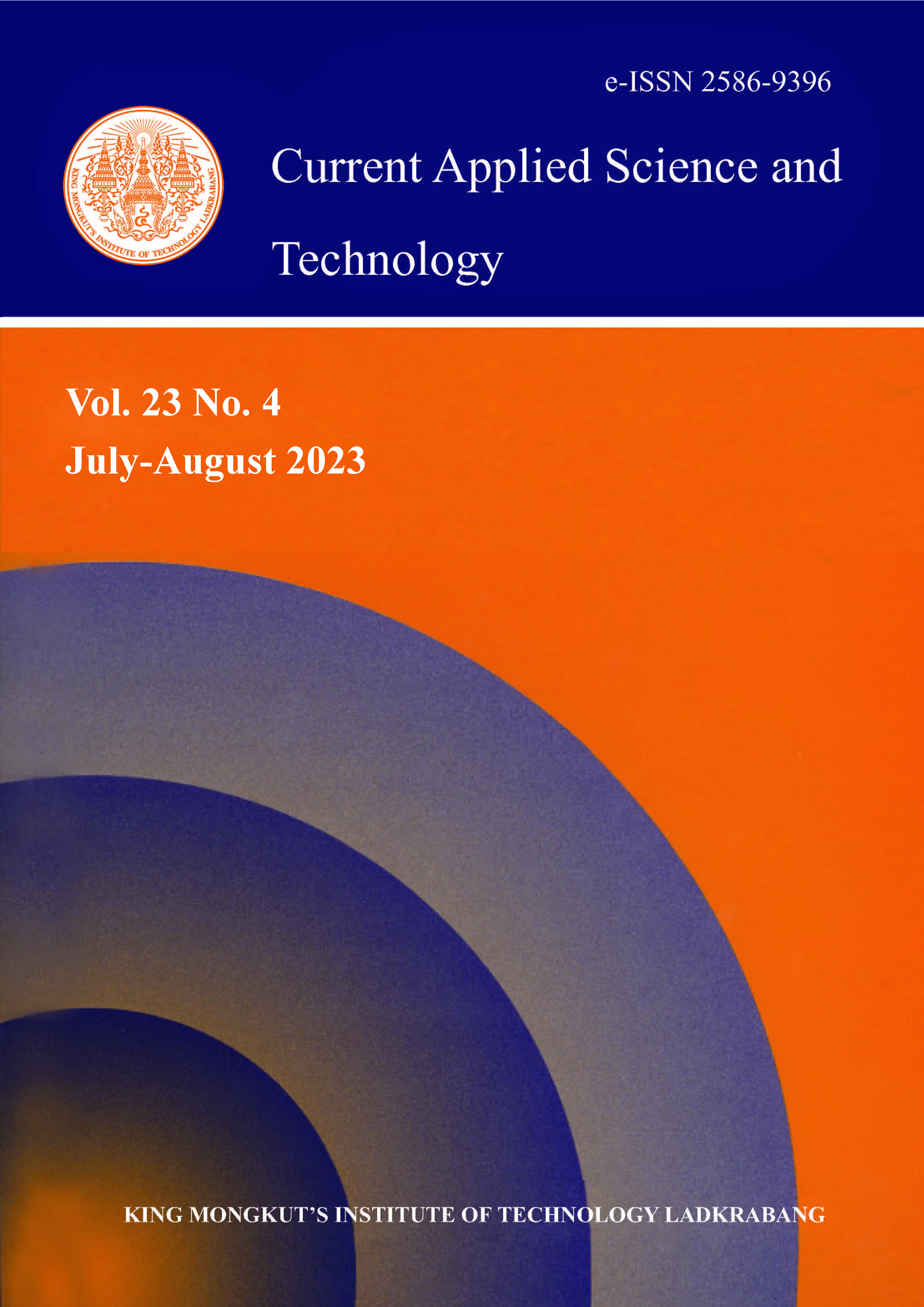Changes in Agro-climatic Indicators in the Korça Region
Main Article Content
Abstract
The productivity of agricultural crops depends on an optimal degree of genetic factors, climate, soil and level of agrotechnology. Climate changes have a significant negative impact on the productivity of agricultural crops. The study is focused on a multi-year analysis of the main climate indicators, such as temperature and precipitation. The data collected from hydrometeorological stations in the Korça region of Albania were processed and compared with the corresponding data from two previous 30-year periods. The increase in temperature indicated a trend without significant volatility from one year to the next, and the annual amount of precipitation did not fundamentally change; however, a greater concern was the amount of rain that fell over fewer days but in larger amounts. Moreover, the structure of the diagram which integrated temperature and average monthly rainfall showed that there had been an increase in the periods of drought. The changes in agro-climatic indicators present a challenge for producers in the field of agriculture if they are to meaningfully remodel agricultural areas and determine the most appropriate cultivation technologies for agricultural crops.
Keywords: bioclimatic indicators; climate changes; ecosystems; precipitation; region of Korça; temperature
*Corresponding author: Tel.: (+355) 676052490
E-mail: maho.adrian@yahoo.com
Article Details

This work is licensed under a Creative Commons Attribution-NonCommercial-NoDerivatives 4.0 International License.
Copyright Transfer Statement
The copyright of this article is transferred to Current Applied Science and Technology journal with effect if and when the article is accepted for publication. The copyright transfer covers the exclusive right to reproduce and distribute the article, including reprints, translations, photographic reproductions, electronic form (offline, online) or any other reproductions of similar nature.
The author warrants that this contribution is original and that he/she has full power to make this grant. The author signs for and accepts responsibility for releasing this material on behalf of any and all co-authors.
Here is the link for download: Copyright transfer form.pdf
References
Peçuli, V. and Kopali, A., 2007. Agroecology. Agricultural University of Tirana. Tirana: Toena Book Publishers.
Ebrahimi, M., Souri, M.K., Mousavi, A. and Sahebani, N., 2021. Biochar and vermicompost improve growth and physiological traits of eggplant (Solanum melongena L.) under deficit irrigation. Chemical and Biological Technologies in Agriculture, 8(1), DOI: 10.1186/s40538-021-00216-9.
Kopali, A. and Doko, A., 2015. Studies on agroclimatic characterization of the area of Korça. Proceeding of Second International Conference of Agriculture Food and Environment, Korçë, Albania, September 25, 2015, pp. 321-329.
Intergovernmental Panel on Climate Change, 2007. Climate Change 2007: Impacts, Adaptation and Vulnerability. New York: Cambridge University Press.
Hydrometeorological Institute, 1990. Climate of Albania. Tirana: Hidmet Book Publishers.
Bender, E., Lehning, M. and Fiddes, J., 2020. Changes in climatology, snow cover, and ground temperatures at high Alpine locations. Frontieres Earth Science, 8, DOI: 10.3389/feart.2020.00100.
Tomczyk, A. Bednorz, E. and Szyga-Pluta, K., 2021. Changes in air temperature and snow cover in winter in Poland. Atmosphere, 12(1), DOI: 10.3390/atmos12010068.
Bartlett, M.G., Chapman, D.S. and Harris, R.N., 2004. Snow and the ground temperature record of climate change. Journal of Geophysical Research, 109, DOI: 10.1029/2004JF000224, 2004.
Goodrich, L.E., 1982. Influence of snow cover on the ground thermal regime. Canadian Geotechnical Journal, 19, 421-432.
Ling, F. and Zhang, T., 2003. Impact of the timing and duration of seasonal snow cover on the active layer and permafrost in the Alaskan arctic. Interactions of Permafrost with Climatic, Hydrologic and Ecosystem Processes, 14(2), 141-150.
Diffenbaugh, N.S. and Giorgi, F., 2012. Climate change hotspots in the CMIP5 global climate model ensemble. Climatic Change, 114, 813-822.
Alessandri, A., De Felice, M., Mariotti, A., Zeng, N., Mariotti, A., Pan, Y., Cherchi, A., Lee, J., Wang, B., Ha, K., Ruti, P. and Artale, V., 2014. Robust assessment of the expansion and retreat of Mediterranean climate in the 21st century. Scientific Reports, 4, DOI: 10.1038/srep07211.
Souri, M.K. and Hatamian, M., 2019. Aminochelates in plant nutrition; a review. Journal of Plant Nutrition, 42(1), 67-78.
Zivdar, S., Arzani, K., Souri, M.K., Moallemi, N. and Seyyednejad, S.M., 2016. Physiological and biochemical response of olive (Olea europaea L.) cultivars to foliar potassium application. Journal of Agricultural Science and Technology, 18(12), 1897-1908.
Cardoso, R., Soares, P., Lima, D. and Miranda, P., 2019. Mean and extreme temperatures in a warming climate: EURO CORDEX and WRF regional climate high-resolution projections for Portugal. Climate Dynamics, 52, 129-157.
Duchêne, E. and Schneider, C., 2005. Grapevine and climatic changes: a glance at the situation in Alsace. Agronomy for Sustainable Development, 25(1), 93-99.
Lipiec, J., Doussan, C., Nosalewicz, A. and Kondracka, K., 2013. Effect of drought and heat stresses on plant growth and yield: a review. International Agrophysics, 27(4), 463-477.
Sadras, V. and Monz, J.P., 2006. Modelled wheat phenology captures rising temperature trends: Shortened time to flowering and maturity in Australia and Argentina. Field Crops Research, 99(2), 136-146.
Wolfe, D., Schwartz, M., Lakso, A., Otsuki, Y., Pool, R. and Shaulis, N., 2005. Climate change and shifts in spring phenology of three horticultural woody perennials in northeastern USA. International Journal Biometeorology, 49(5), 303-309.
Institute of GeoSciences, Energy, Water and Environment Monthly, 2021. Climate Bulletin 2016-2021. [online] Available at: http://www.geo.edt.al.
Peçuli, V. and Kopali, A., 2007. Ecology. Tirana: Toena Book Publishers.
Bagnlous, F. and Gossen, H., 1957: Les climate bilogiques et leur classification. Annales de Géographie, 355, 193-220.
Rivas-Martínez, S., Sáenz, S.R. and Penas, A., 2011. Worldwide bioclimatic classification system. Global Geobotany, 1, DOI: 10.5616/gg110001.
Kopali, A., Peculi, V., Teqja, Z. and Rota, E., 2012. A study on agroclimatic characterization of Albanian Territory. Albanian Journal of Agricultural Sciences, 11, DOI: 10.13140/RG.2.1.2527.9200.






